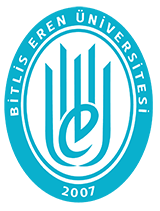THE PRACTICAL INTEGRATION OF LINEAR ALGEBRA IN GENETICS, CUBIC SPLINE INTERPOLATION, ELECTRIC CIRCUITS AND TRAFFIC FLOW
View/
Date
2024Author
Audu, Khadeejah James
Elisha, Yak Chiben
Yahaya, Yusuph Amuda
Akande, Sikirulai Abolaji
Metadata
Show full item recordAbstract
A fundamental mathematical field with many applications in science and engineering is linear algebra. This paper investigates the various applications of linear algebra in the fields of traffic flow analysis, electric circuits, cubic spline interpolation, and genetics. This research delves into individual applications while emphasizing cross-disciplinary insights, fostering innovative solutions through the convergence of genetics, cubic spline interpolation, circuits, and traffic flow analysis. The research employs specific methodologies in each application area to demonstrate the practical integration of linear algebra in genetics, cubic spline interpolation, electric circuits, and traffic flow analysis. In genetics, linear algebra techniques are utilized to represent genetic data using matrices, analyze genotype distributions across generations, and identify genotype-phenotype associations. For cubic spline interpolation, linear algebra is employed to construct smooth interpolating curves, involving the derivation of equations for spline functions and the determination of coefficients using boundary conditions and continuity requirements. In electric circuit analysis, linear algebra is crucial for modeling circuit elements, formulating systems of linear equations based on Kirchhoff's laws, and solving for voltage and current distributions in circuits. In traffic flow analysis, linear algebra techniques are used to represent traffic movement in networks, formulate systems of linear equations representing traffic flow dynamics, and solve for traffic flow solutions to optimize transportation networks. By addressing contemporary challenges, emerging research frontiers, and future trajectories at the intersection of linear algebra and diverse domains, this study underscores the profound impact of mathematical tools in advancing understanding and resolving complex real-world problems across multiple fields.
Collections

DSpace@BEU by Bitlis Eren University Institutional Repository is licensed under a Creative Commons Attribution-NonCommercial-NoDerivs 4.0 Unported License..













